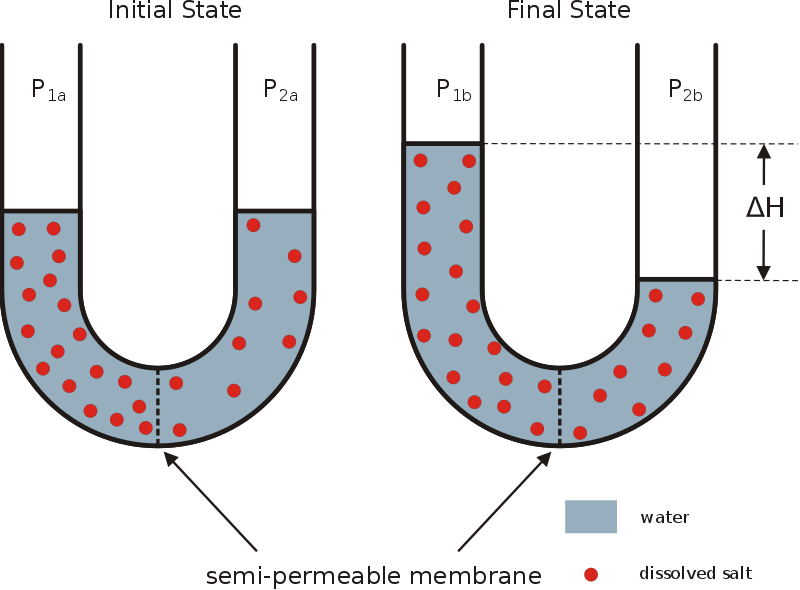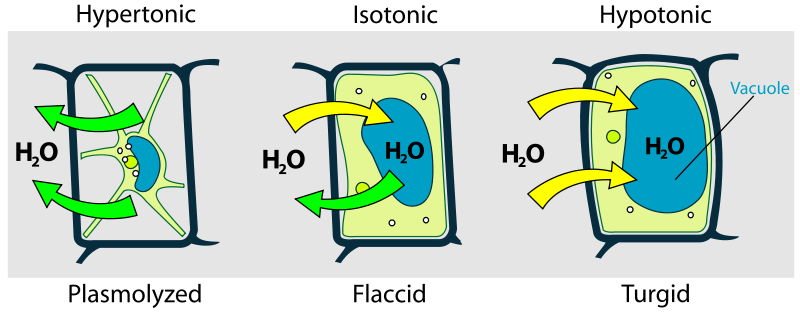Contents
Diffusion
Diffusion is the net movement of a substance from high concentration to low concentration. This difference in concentration is referred to as a concentration gradient. This movement does not require any external energy, but uses the free energy intrinsic to the system.
-
- Temperature Effects on Diffusion
-
- Molecular Mass Effects on Diffusion
Osmosis
Osmosis is a special case of diffusion. Instead of observing the net change in solute, osmosis follows the net movement of solvent across a semipermeable membrane. Since a semi-permeable membrane permits specific things to pass through, some solutes are partitioned.
-
-
-
-
- Simulation of diffusion through a semipermeable membrane (CC-BY 4.0 Concord Consortium)
-
-
-
A cell lacking a cell wall is affected greatly by the tonicity of the environment. In a hypertonic solution where the concentration of dissolved solute is high, water will be drawn out of the cell. In a hypotonic solution where the concentration of dissolved solute is lower than the interior of the cell, the cell will be under great osmotic pressure from the environmental water moving in and can rupture.
Plants have rigid cell walls composed of cellulose. These cell walls permit for maintenance of cellular integrity when the external environment is hypotonic (less dissolved substances). In this situation, the water moves into the cell. Without the cell wall, the cell would burst open from the excessive water pressure entering the cell. This state of swelling is referred to as turgid, resulting from turgor pressure.
When the exterior environment is hypertonic , (greater amount of dissolved substances), the reverse condition occurs whereby the cellular fluid exiting the cell reduces the size of the cytoplasm. This condition is referred to as plasmolysis.
Passive Transport
Passive Transport is the movement of substances across a semipermeable membrane without the input of cellular energy. There are 4 major types of passive transport: diffusion, facilitated diffusion, filtration and osmosis.

Facilitated diffusion works by concentration gradients of substances that would not ordinarily be able to cross the lipid membrane. This diffusion is facilitated by the presence of a channel protein.

Ion Channels are transmembrane proteins that facilitate the movement of ions across the membrane. The pore of the channels contains specific amino acid residues that foster the movement of selective ions across.







